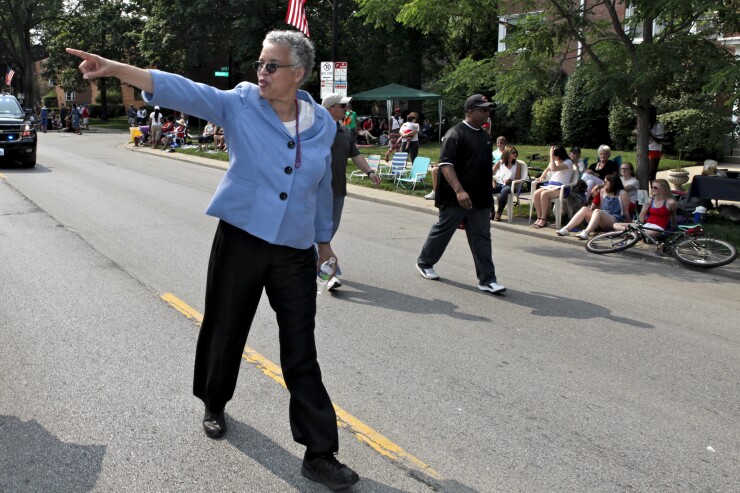CHICAGO – Cook County, Illinois, faces “difficult choices” to close a projected $82 million gap in the next fiscal year without tax increases, board President Toni Preckwinkle said.
The county, which covers Chicago and neighboring suburbs, released a preliminary forecast Tuesday to kick off its budget season. Preckwinkle will present a roughly $5.2 billion budget for the fiscal year that begins Dec. 1 in the fall and approval typically occurs in November.

The projected deficit is the lowest since she took office in 2010 and the county is not currently looking at revenue increases, Preckwinkle said.
“We will work with commissioners and the separately elected officials in the coming months to examine any areas where we can increase efficiencies, reduce costs and ultimately close this budget gap,” she said in a statement.
The county is eyeing reducing overlap in programs, services and real estate and is looking to squeeze out more in contract savings and may delay hiring and establish strategies to reduce costly overtime and will review revenue collections.
Expenses are projected to grow by $62.9 million due to rising personnel costs, higher employee health benefit costs rising at the rate of medical inflation, increased supplemental pension contributions, and technology related expenses. Some additional revenue expected in the coming fiscal year will offset the increases.
Cook County Health and Hospitals System expenditures are expected to increase by $619 million while revenues are expected to rise by $589.5 million, or 29%, leaving a $29.5 million gap in that fund.
The county expects to close out the current fiscal year with $600,000 more than previously estimated.
The county’s $5.2 billion fiscal 2018 budget was pressured by the board’s repeal in October of a sweetened beverage tax. County board president Toni Preckwinkle and commissioners agreed to spending cuts to offset the loss of $200 million in revenue.
Persistent pension pressures prompted S&P Global Ratings to
“The negative outlook reflects our view that despite the strides the county has made to improve the funding of its pension liabilities, including passing a sales tax to support payments above the state's statutory requirement, the pressures the low pension funding levels put on the county's operations could negatively affect the rating," wrote analyst Lisa Schroeer.
Fitch Ratings earlier this year affirmed its A-plus rating and stable outlook. Moody’s Investors Service affirmed its A2 rating and stable outlook.
The county, which covers Chicago and its neighboring suburbs, has about $3 billion of GO debt and $269 million of sales tax debt.
The county made supplemental pension contributions of $270.5 million in fiscal 2016 and $353.8 in fiscal 2017 above its statutorily set levels. Another supplemental contribution of $353.4 million is planned for fiscal 2018, which should bring total payments to about 80% of the actuarially determined contribution level. Future supplemental payments are not reflected in the pension system’s reporting because the county still needs state legislative approval to codify the new funding scheme – supported by a sales tax hike -- into law.
The county had $7.238 billion of unfunded liabilities, including retiree pension healthcare obligations, for a funded ratio of 56.7% in 2016, compared to $7.241 billion and a funded ratio of 55.4% in 2015. The county’s net pension liabilities for reporting purposes under newer accounting rules totaled $14.124 billion in 2016.





